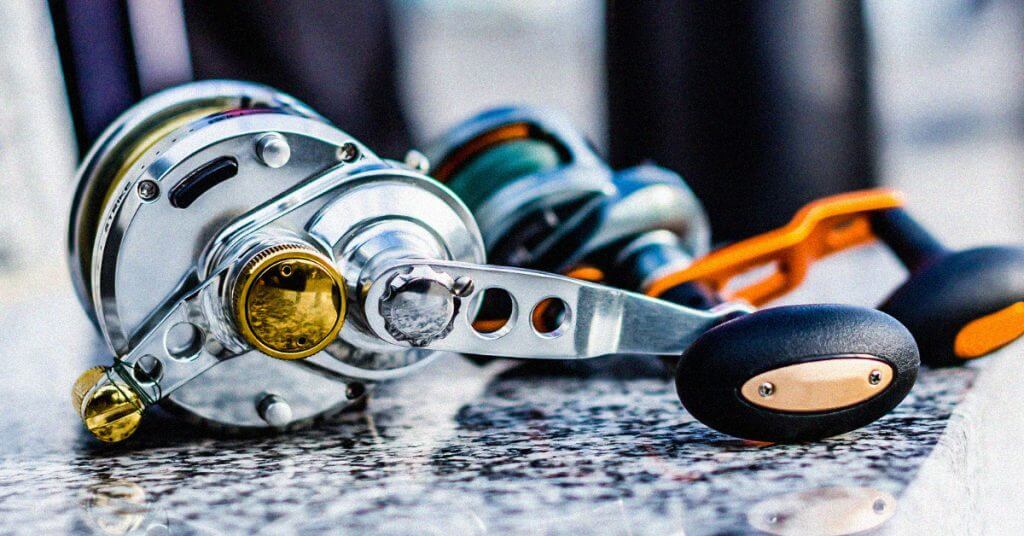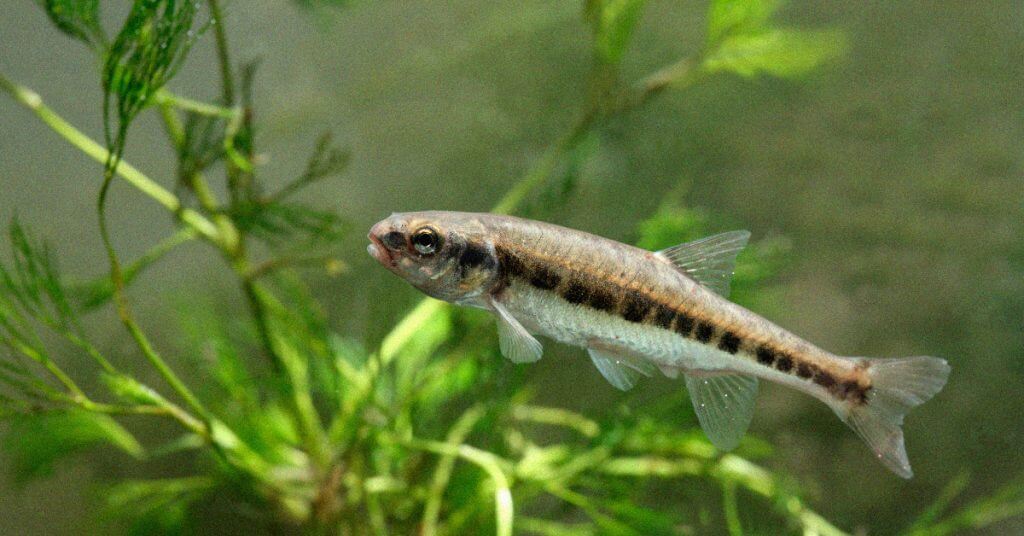While most anglers pack away their rods in November, I’ve developed a (fairly) solid understanding of winter bass behavior that keeps me fishing through the cold months.
Here are my top tips to help you master bass fishing in winter.
Last updated: January 15th, 2025
- 1. Choose The Right Lure Type
- 2. Slow it Down
- 3. Size it Down
- 4. Go Neutral
- 5. Know Where to Look
- 6. Time it Right
- 7. Don’t Forget the Shore
- 8. Master your Understanding of Water Temperature
- 9. Bring the Right Gear
- 10. Keep it Simple
- What You Need for Bass Fishing in Cold Weather
- Frequently Asked Question
- Final Thoughts
1. Choose The Right Lure Type
When winter rolls around, you need to change your lure selection strategy. The fast-moving, noisy lures that worked great during summer won’t get you the results you’re looking for in cold water.
I’ve noticed that bass become much more selective during these months, and they’re simply not interested in chasing down aggressive presentations.
What works best are bottom feeders and slower-moving lures – specifically jigs, spoons, and blade baits.
I’d stay away from lipless crankbaits, suspending jerkbaits, spinnerbaits, and other fast moving lures until spring.
When it comes to color selection, natural is the way to go. Try to match the predominant baitfish colors in your fishing spot. Nature provides the blueprint – you just need to follow it.
For a complete guide on winter lure selection, check out my article on the best winter bass lures.
2. Slow it Down
Winter largemouth bass fishing requires you to think like a fish. They simply don’t have the energy or motivation to chase fast-moving lures.
Their metabolism slows down significantly in cold water, which means they’re feeding less and conserving energy whenever possible.
The key is to make your presentation slow and effortless.
I focus on putting the bait right in front of their face and moving it slowly and erratically, almost like a dying baitfish. This approach makes the bass think they’ve found an easy meal on their hand.
The bonus? When you do hook one, they typically don’t put up as much of a fight, making them easier to land.
3. Size it Down
Just like you lower down our presentation speed, you also need to present a smaller lure. Small baitfish are an excellent live bait option, but if you’re using artificial lures, a compact football head jig or spoon with a touch of red works great.
The key is keeping your approach consistent with the conditions. When water temperatures are hovering near freezing, I reach for the smallest jig head I can find and pair it with a small Senko or swimbait.
In winter, bass are more likely to strike at something that appears to be an easy, manageable meal rather than a challenging target.
4. Go Neutral
Color selection becomes even more critical during winter months. The best approach is to match the local baitfish colors if you can spot them in your fishing area. If you can’t, neutral colors are your safest bet.
I stick with a simple color palette during winter – browns, greens, whites, greys, and blacks. The idea here is to present as little of a threat as possible, and bright neon colors look intimidating, so the bass will leave it alone.
5. Know Where to Look
The best tip someone ever told me about finding bass in the winter is to add 10-20 feet of water to where you would normally fish. Of course, you can’t know this without fish finders and depth checkers, but you can estimate it even if you don’t have electronics.
For example, if you normally fish 30 feet from the shoreline in summer, try moving out to about 50 feet during winter. Bass naturally seek deeper water when temperatures drop.
Water clarity should also play a crucial role in your location strategy. In murky conditions, baitfish tend to move deeper, taking the bass with them. In clear water, they’ll stay closer to shore.
It’s important to factor in recent weather conditions too – fresh, unmelted snow typically means clearer water, so you can fish closer to shore. However, when that snow starts melting, the runoff creates murkier conditions, pushing the fish further out.
6. Time it Right
Winter bass fishing requires a shift in your timing strategy. While dawn and dusk are the best times to fish for bass during warm months, I’ve found midday to be the sweet spot in winter.
Once the sun has had time to warm the water, baitfish become more active, and that’s when bass are most likely to feed.
While that’s the case 99% of the time, here’s a surprising twist – some experienced anglers find success targeting smallmouth bass early in the morning, right as the sun comes up.
If you want to try this approach, I would recommend fishing the bottom near some of the lake’s deep water. Bass tend to hide in schools during the winter, and they look for little drop-offs and holes where baitfish and other food might hang out.
7. Don’t Forget the Shore
For winter bass fishing success, you need to understand two critical factors: shoreline areas and baitfish behavior.
During cold months, baitfish gravitate toward shorelines near rivers because these areas offer two things they need – higher oxygen levels and slightly warmer water temperatures. Where the baitfish go, the bass follow.
This pattern creates an excellent opportunity for shore fishing. By casting parallel to the shoreline, you can effectively work these productive areas.
I find it more enjoyable to fish from the shore during the winter because it’s a little easier to stay warm, and if I’m fishing alone, it just makes me feel more comfortable.
8. Master your Understanding of Water Temperature

I’ve found that water temperature is the key to understanding winter bass behavior. Let me break this down into three crucial temperature ranges:
Less than 40 degree water
These are challenging conditions for fishing. Bass become extremely lethargic in these temperatures, conserving every bit of energy they can. Their metabolism slows to a crawl, and they’ll only take the easiest meals.
For you to have success fishing during this time, you need to throw your lure right in their face and present it slow enough for them to get it.
40-50 degree water
This is typically what you’ll encounter in Northern waters during late winters of January and February.
While bass are still slower than usual, they maintain daily feeding periods that you can capitalize on. I focus on matching their energy level with a methodical, calculated presentation.
50+ degree water
This is the sweet spot, though you’ll mainly find these temperatures in Southern states during winter. So, this doesn’t help everyone North of the Mason-Dickson.
You’ll also see these conditions during seasonal transitions. Bass remain fairly active at these temperatures, and while you’ll still want to slow down and downsize your presentation somewhat, you can expect action throughout the day.
9. Bring the Right Gear
While this isn’t a direct tip, winter safety gear is just as important as everything else. Winter fishing can be dangerous, especially in regions with extreme cold and icy waters.
I follow a simple approach for staying warm and safe: I layer up before leaving home and keep the car heat running on the way to my spot. This helps build up body warmth before stepping out.
My winter setup includes multiple layers, thick socks, ice fishing boots, and fingerless gloves that let me maintain the full movement of my fingers.
Most importantly, always let someone know your fishing plans.
Even if you live alone, tell a parent, friend, or neighbor that you’re going fishing, and you’ll be back at a certain time. It could make all the difference in an emergency.
10. Keep it Simple
You don’t need to overcomplicate these winter bass fishing tips, but the most important one to remember is to stay calm and remain patient. Winter bass fishing is not easy, but it’s also not impossible.
It will take some time for you to learn, and that can get frustrating but don’t give up.
You won’t get as many nibbles as you do during the summer and spring, but chances are you’ll get more interested bass if you follow all the tips outlined in this guide.
Have a good amount of patience and be sure to present every lure slowly but erratically with time in between each jerk.
What You Need for Bass Fishing in Cold Weather
First off, here are some of the essentials that will get you started with wintertime bass fishing:
- Spinning or casting rod based on your preferences
- Cold weather gear such as waders, boots, and gloves
- Slow moving fishing lures like jigs, spoons, and blade baits
- Heating source to keep you warm (I recommend a Mr. Heater)
Note: The best ice fishing gear is great for cold water fishing as well. This gear will help keep you warm and safe in the snow and ice even before the water freezes over.
Frequently Asked Question
What do bass eat in the winter?
In the winter, bass eat baitfish like shad and minnows. It’s the same diet they have all year, they just eat less of it.
Final Thoughts
Anglers.com Community Coordinator Wesley Littlefield offers several winter bass fishing tips in this video.
If you enjoy fishing for cold water bass in the winter, I’m hoping this step-by-step guide was helpful. Whether you did or you didn’t, feel free to leave me a comment with what you think.
Fishing is a pretty subjective sport and I love hearing what has worked for others.
The bottom line is that winter bass fishing is all about attitude and understanding.
We can’t approach this type of fishing like we do warm weather fishing.
It’s so important that we understand how bass habits change and how we need to adapt rather than think we can force them to do what we want.
Remember to slow it down, size it down, and think like the bass. If they’re feeling slow and sluggish, you need to replicate that as well.





You did not suggest plastic worms etc. Why not? If there are bluegills in the lake or pond would a green weenie be a good choice if fished slowly?
Hey Randy, I didn’t suggest them in this guide but also didn’t necessarily suggest against using them either. It’s tough sometimes to pick something that’s the “best” because everyone has their own opinion based on how they fish and what they like to use. I definitely think you could use any plastic worm you like if you slow it down.
Also, consider checking this article out where I recommend some specific lures: https://anglers.com/fishing-lures/best-winter-bass-fishing-lures/
Thanks for reading!